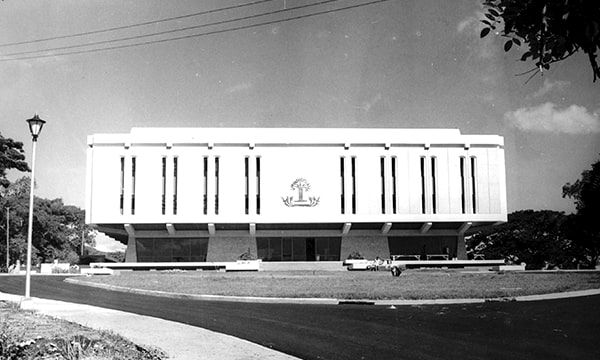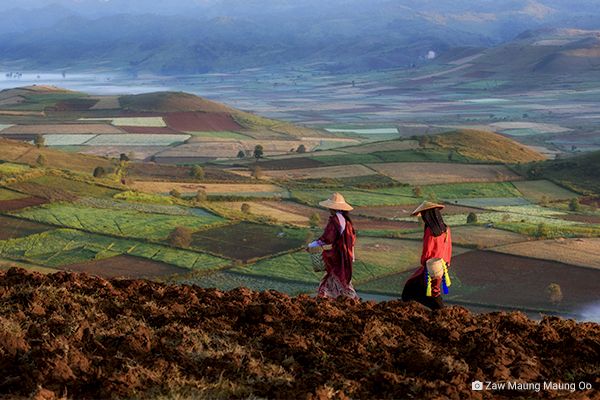Brief History of SEARCA

Agriculture—the foundation of food security and a powerful driver of poverty reduction—remains central to national development across Southeast Asia. As the region faces growing populations, dwindling natural resources, and the worsening effects of climate change, the importance of sustainable, inclusive agricultural development has never been greater. In this context, SEARCA looks back with deep appreciation to the foresight of its founders, who, in 1965, envisioned a Center that would strengthen the region’s agricultural capacity and resilience for generations to come.
In November 1965, Southeast Asia’s education ministers—joined by a U.S. government representative—convened to explore regional cooperation in education, science, and culture. Among their recommendations was the creation of a center for graduate study and research in agriculture. Recognizing its leadership in agricultural education, the University of the Philippines College of Agriculture (UPCA) was proposed as host. Dr. Dioscoro L. Umali, then UPCA Dean, and his team championed using existing institutions rather than building from scratch.
By July 1966, the Philippine delegation submitted a formal proposal at a SEAMES technical workshop in Kuala Lumpur. UPCA was endorsed to host the envisioned regional center. In November that same year, during the SEAMES Conference in Manila, the proposal was approved—officially establishing the Southeast Asian Regional Center for Graduate Study and Research in Agriculture (SEARCA) on 27 November 1966.
1967–1969
SEARCA operated on an interim basis while its Enabling Instrument and operational guidelines were being finalized. In 1969, a formal agreement was signed, marking SEARCA’s full operational start with funding support from the Philippine and U.S. governments.
1969–1979
During its initial First and Second Five-Year Plans (1969-1979), SEARCA focused on creating and sharing technologies to boost agricultural productivity. Key research projects included water management, addressing protein deficiency, establishing a gene bank and agricultural information database for Asia, studying corn systems, a social laboratory, corn downy mildew, research management, and the impact of high-yield crops.
1979-1984
During its Third Five-Year Plan (1979-1984), SEARCA focused on managing agricultural sub-systems like irrigation, research, extension, post-production, and farming systems. In 1982, it adopted Farmers' Community Development (FCD) as its main approach to improve agriculture and rural life in Southeast Asia.
1984-1989
SEARCA's Fourth FYP (1984-1989) focused on Agricultural and Rural Development through technology development, dissemination, and use. The center regularly updated its research priorities based on changing agricultural technology needs.
1989-1994
SEARCA's Fifth FYP (1989-1994) concentrated on adapting existing agricultural technologies and models for SEAMEO countries. Instead of new research, it emphasized applied R&D that built upon past results, shifting focus to pilot testing and practical application of previous findings.
1994-1999
SEARCA's Sixth FYP (1994-1999) focused on creating and testing agricultural development methods. Key R&D areas included upland communities, agro-industrialization, gender, agricultural information management, coastal agriculture, and bio-fertilizer research.
1999–2004
SEARCA's Seventh FYP (1999-2004) addressed agro-industrial growth alongside environmental protection. Projects focused on food security, biotechnology, water management, biodiversity, sustainability, risk management, gender, and policy.
2004–2014
SEARCA's Eighth and Ninth FYPs (2004-2014) adopted the same strategic themes: natural resource management (NRM) and agricultural competitiveness. NRM projects focused on sustainable land and water use, climate change, and biodiversity. Agricultural competitiveness initiatives included trade, technology management, governance, institutional reforms, and policy studies.
2014–2020
SEARCA's Tenth FYP centered on Inclusive and Sustainable Agricultural and Rural Development (ISARD), emphasizing social inclusion and environmental sustainability. Its strategies involved action research, experiential learning, and support for ASEAN economic integration. Amid operational demands and the need for broader consultative processes, the 10th FYP was extended by one year to ensure a smooth and strategic transition toward the development of the 11th FYP.
2020–2025
The Eleventh FYP focused on accelerating transformation through agricultural innovation (ATTAIN) to elevate agricultural families' quality of life through sustainable livelihoods and modern market access, with emphasis on collaborating with partners for the Sustainable Development Goals. Its focus included agri-business, sustainable farming, food security, ARD leadership, gender/youth engagement, climate resilience in ARD, and One Health/Eco-health applications.
Watch this video to trace SEARCA’s journey alongside the evolving agricultural story of Southeast Asia:
